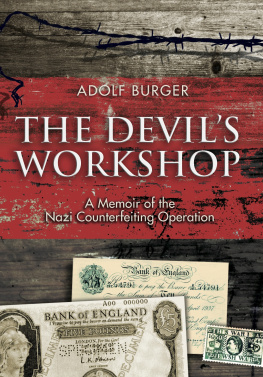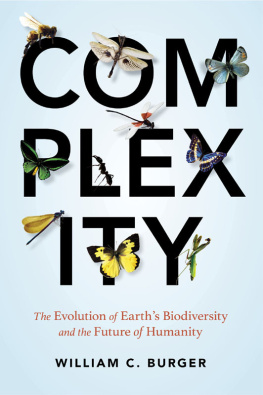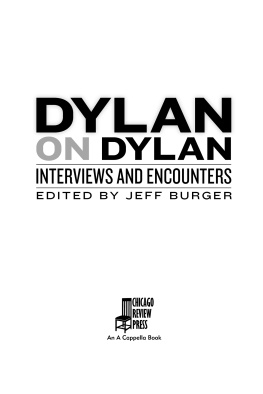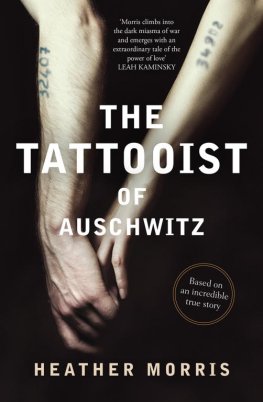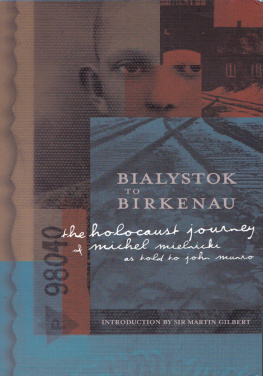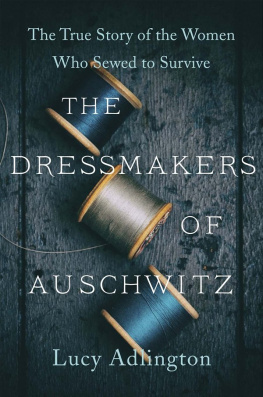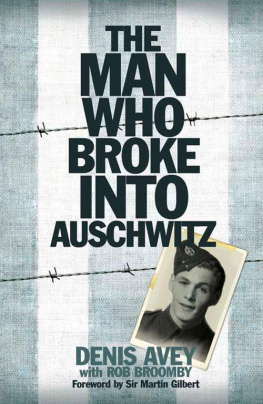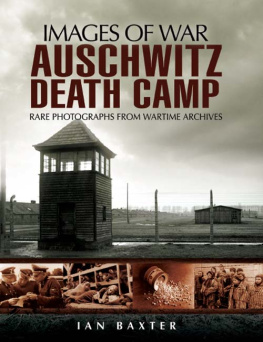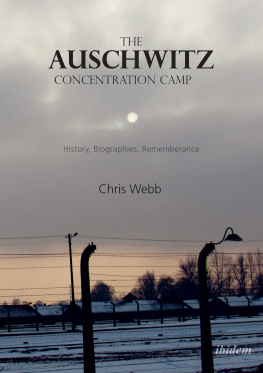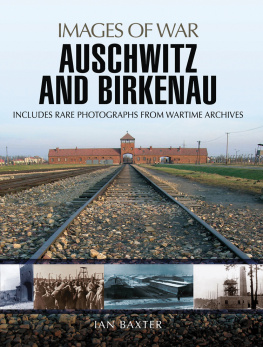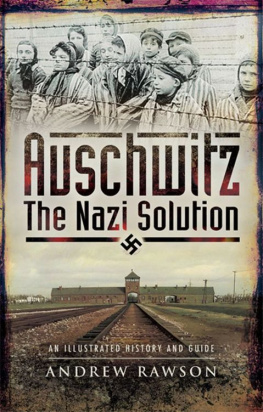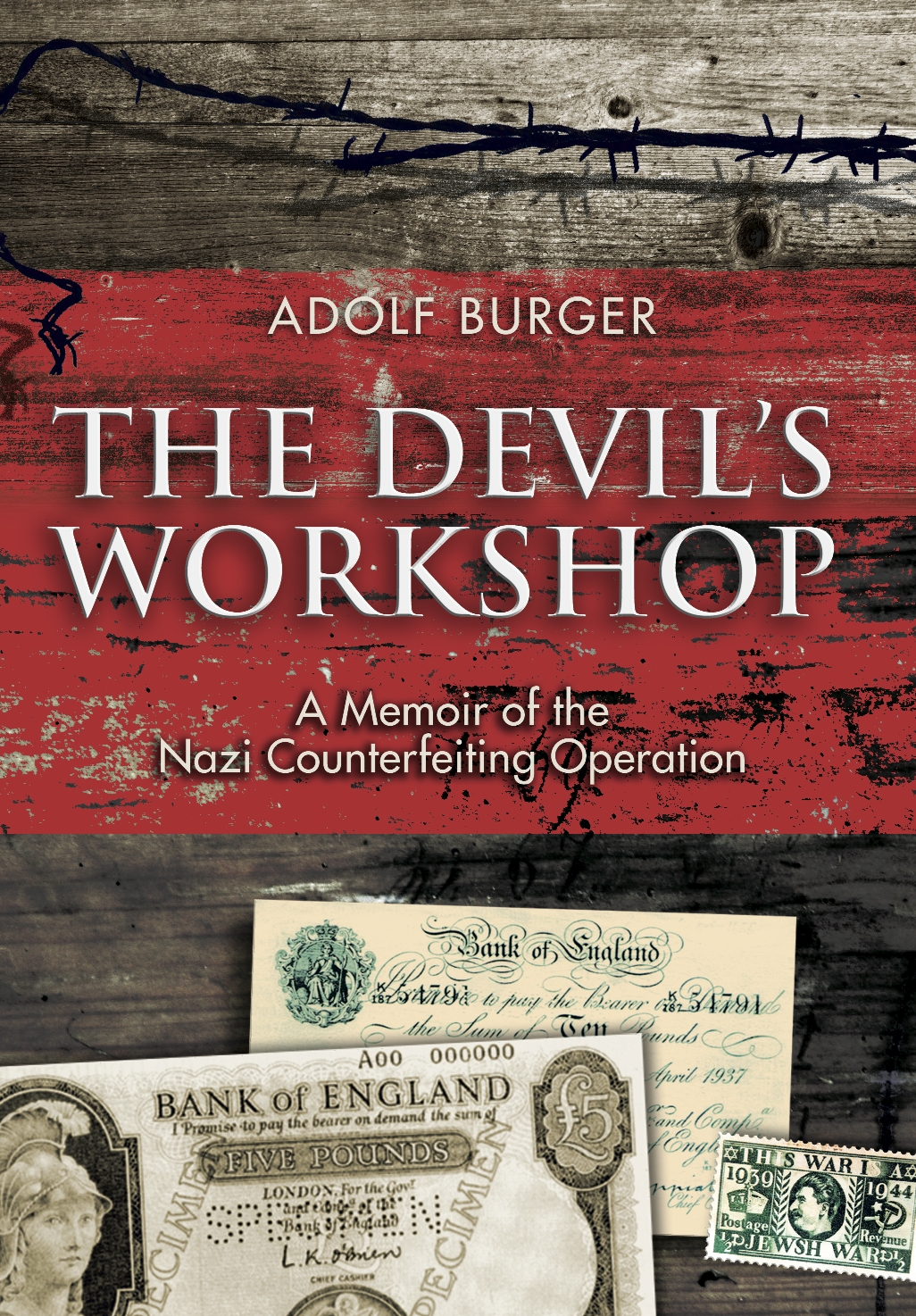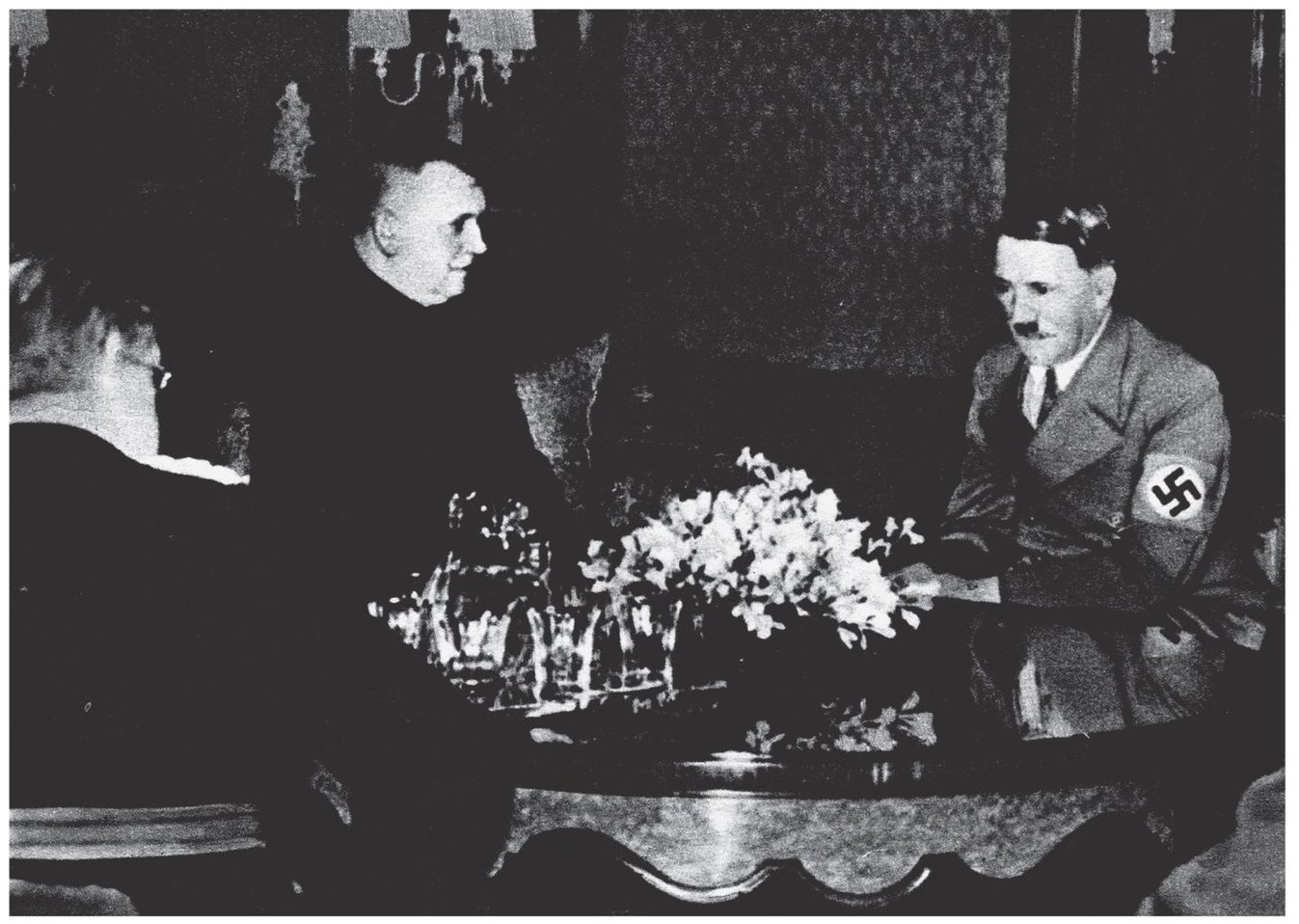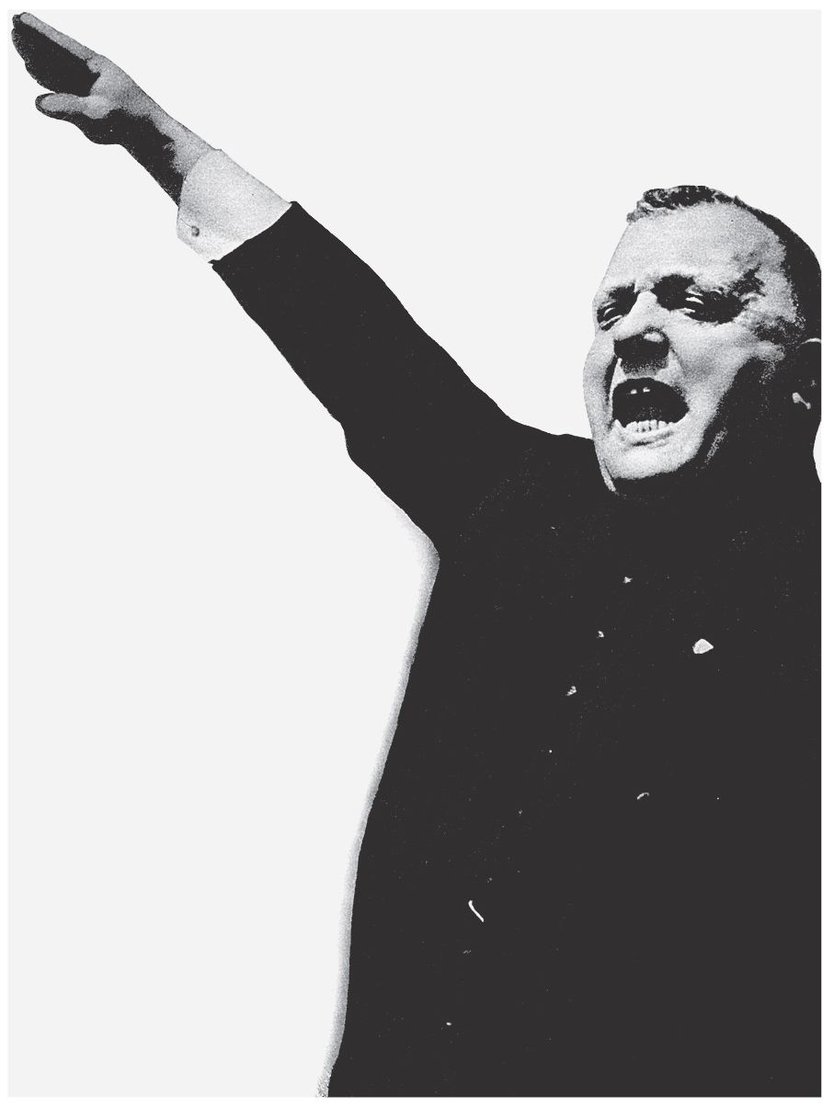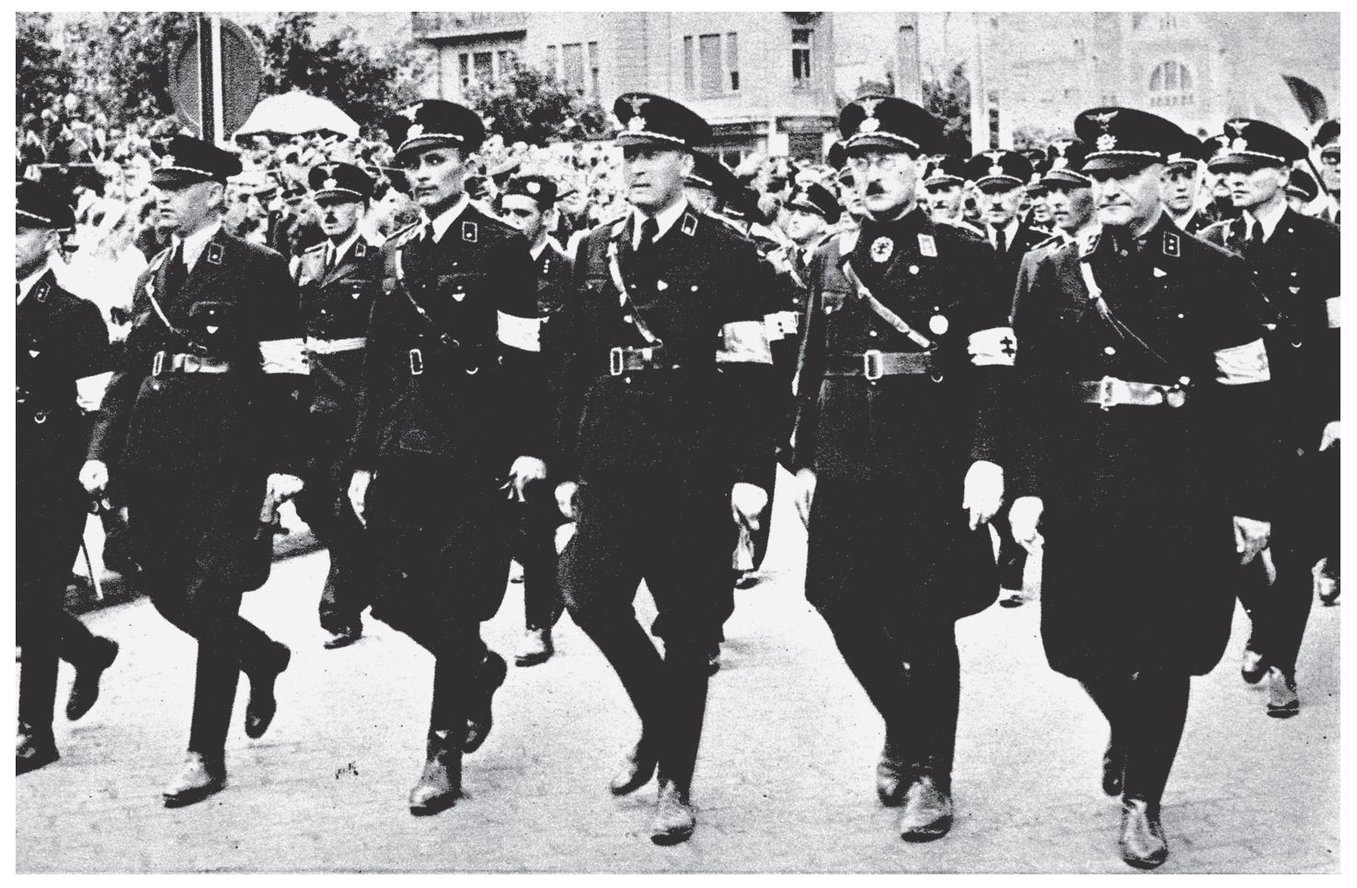Select Bibliography
Lucie Adelsberger, Auschwitz Ein Tatsachenbericht , Lettner Verlag, Berlin, 1956
Peter Edel, Wenn es ans Leben geht Zweiter Teil , Verlag der Nationen, Berlin, 1979
Gedenkbuch Die Sinti und Roma im Konzentrationslager Auschwitz Birkenau , Publisher Staatliches Museum Auschwitz-Birkenau, 1993
Julius Mader, Poklad banditu Nakladelstvi Nase vojsko , Prague, 1967
Filip Mller, Sonderbehandlung , Publisher Steinhausen, Munich, 1979
Reinhard Rrup, Topographie des Terrors , Publisher Willmuth Arenhvel, Berlin, 1989
Tragdie der Slowakischen Juden , Dokumente und Fotografien , Publisher Neubert and Shne, Bratislava, March 1949
Information and reports from foreign and local publications for the period 1959 63, covering the search for the Nazi hoard in Toplitzsee.
Drawings: Salamon Smolianoff, Leo Haas, Peter Edel
Photos: SPB Archive Prague; authors personal archive; Wolfgang Pratsch Archive, Lund Sweden; DPA
In spite of intensive efforts, it has not been possible to find the addresses of persons cited, or of their heirs. We would ask them to contact the publisher.
Abbreviations
| AVNOJ | Anti-Fascist Council of National Liberation of Yugoslavia |
| BF | Brigadefhrer |
| BND | Bundesnachrichtendienst |
| DAW | Deutsche Ausrustungs-Werke |
| Gestapo | Geheime Staatspolizei |
| GF | Gruppenfhrer |
| HG | Hlinka-Garde |
| HSF | Hauptsturmfhrer |
| KL | Konzentrationslager (concentration camp an abbreviation used in official documents) |
| KK | Kriminalkommisar |
| KZ | Konzentrationslager (concentration camp) |
| NKWD | Sowjetischer Sicherheitsdienst (Soviet secret service) |
| NN | Nacht und Nebel (under cover of darkness) |
| NSDAP | Nationalsozialistische Deutsche Arbeiterpartei (Nazi Party) |
| OGF | Obergruppenfhrer |
| OSF | Obersturmbannfhrer |
| RM | Reichsmark |
| RSHA | Reichssicherheitshauptamt (Reich Security Ministry) |
| SA | Sturmabteilung |
| SBF | Sturmbannfhrer |
| SD | Sicherheitsdienst |
| SF | Scharfhrer |
| Sipo | Sicherheitspolizei |
| SS | Schutz-Staffel |
| USF | Unterscharfhrer |
1
Childhood and Youth in Slovakia
MY CHILDHOOD WAS SPENT IN Velk Lomnica, in the district of Kemarok, in Slovakia. I was born here in 1917 into a Jewish family. I had a brother and two sisters. My father was a master brewer and worked in a distillery. We also owned a small farm.
This was during the First World War. I am sure my father was glad that his son was not aware of the horror. The war only reached our little mountain village in the foothills of the High Tatra in the form of death notices or reports of family members wounded or missing. When my father died in 1921, my mother could not run the farm on her own, so we moved into the little town of Poprad. After leaving school I was trained as a printer. When my apprenticeship finished I was called up for military service in the Czechoslovakian army in the officers training corps of the 3rd Mountain Infantry regiment.
The dominant, politically conservative, force in Slovakia was the Catholic Slovakian Peoples Party (Volkspartei), founded in 1905 in what was then Hungary by Andrej Hlinka, a priest. After his death on 16 August 1938, Monsignor Josef Tiso was elected as his successor.
The Munich Diktat of 29 September 1938 brought about a fateful turn of events. The followers of the Slovakian Peoples Party availed themselves of the political climate of the time and the weakness of the state. They increasingly demanded autonomy, in order to introduce measures to curb left-wing organisations. On 6 October Josef Tiso formed an autonomous Slovakian government, then the Communist Party was declared illegal and its members persecuted.
The Hlinka-Garde (HG) militia was founded on the model of the armed party groupings in Nazi Germany. This black-uniformed SS-style militia had the task of spreading the clerical fascist ideology of the regime and of eliminating its political opponents.
On 13 March 1939 there was a decisive development in this stormy and confused period in Slovakia. Tiso announced at the HG annual conference that he had been invited by Hitler to bring about the withdrawal of Slovakia from the Bohemian territories, under the threat of occupation by Hungary.
Tiso rose to Hitlers challenge. On 14 March the Slovakian parliament decided to form the State of Slovakia. Immediately afterwards, on the night of 14/15 March, Hitler summoned Emil Hacha, president of the Czechoslovak Republic, to Berlin, to the Chancellery (Reichskanzlei), where he was informed by the Fhrer that German troops would occupy the remaining Bohemian territories, which were incorporated into the Reich as the Protectorate of Bohemia and Moravia.
13 March 1939: Monsignor Josef Tiso, president of the Slovakian State, pictured with Hitler
After Slovakia had been transformed into a German protectorate Monsignor Josef Tiso became president and head of state (Fhrer). Vojtech Tuka became prime minister. Between them they turned Slovakia into a National Socialist state. Tuka promised that Slovakian National Socialism will be based on the principles of German National Socialism. They both kept their word. The position of Slovakian Jews became more and more critical every day.
On 9 September 1941 the Nuremberg Laws were introduced into Slovakia in the form of the Jewish Code, Slovakian State Law, Art. No. 198 of 9 September 1941. The Slovakian anti-Jewish laws surpassed even the German laws in their small print. For example, Jews were forbidden not only to own a car, but also to drive one. Just before this, at the beginning of September, the German imperial minister for home affairs, Frick, and secretaries of state Stuckart and Globke, who drew up the Nuremberg Racial Laws, had been in Bratislava for the second time (Globkes first visit as German government representative had taken place in January 1941).
On 18 September 1941 the rule came into effect that every Jew over the age of six had to wear the yellow Star of David in public. Thus began the tragedy of the Slovakian Jews in a state that prided itself on being Christian and whose president was a priest. It was a state that proclaimed to the world that it was founded on the principle of love your neighbour, respect for the Ten Commandments and the equality of all men before their creator.
Monsignor Josef Tiso, president,
murderer of Slovakian Jews
Black Hinka-Garde militia on parade. An organisation modelled on the SS, which provided reliable support for German Nazi criminals

